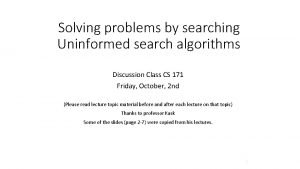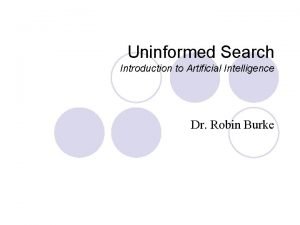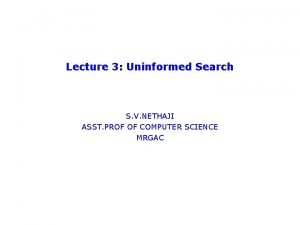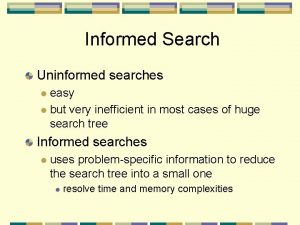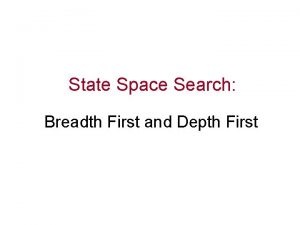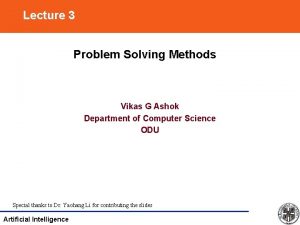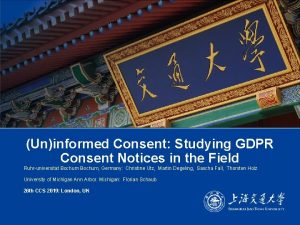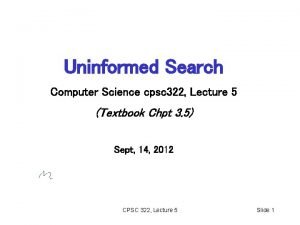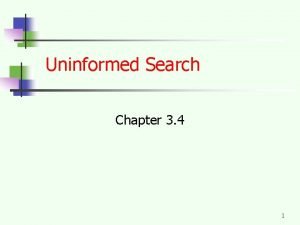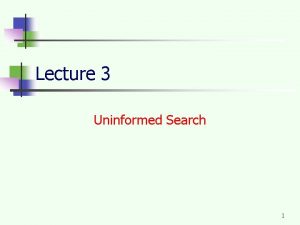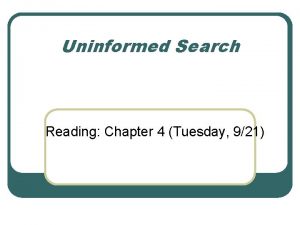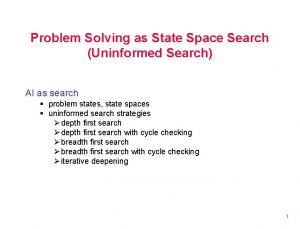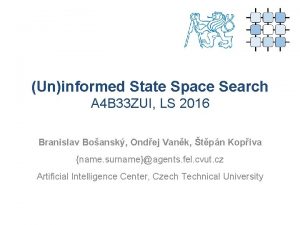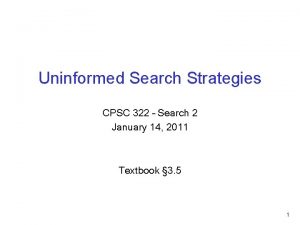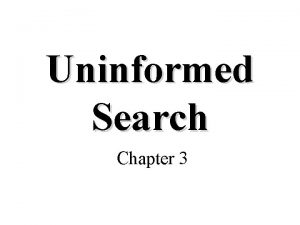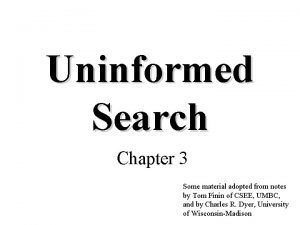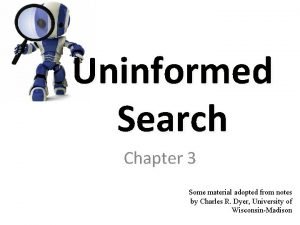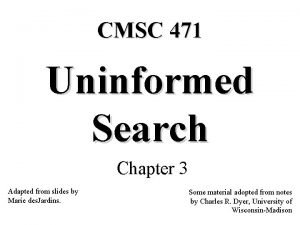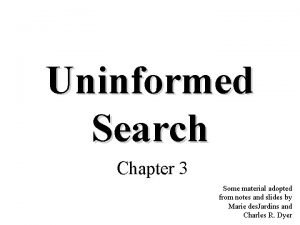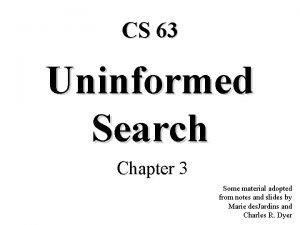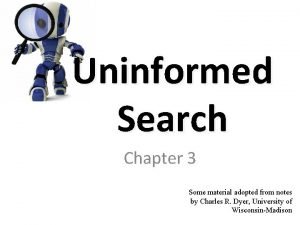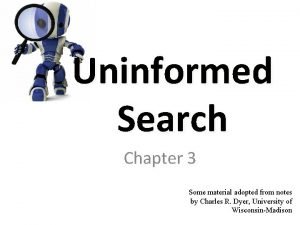Uninformed Search R N Chapter 3 State Space



















- Slides: 19

Uninformed Search R & N Chapter 3

State Space Search We need: • Set of states • A start state • A set of operators (a successor function), possibly with costs attached. • A set of goal states (or a way to test for goal)

A Water Jug Problem You are given two jugs, a 4 -gallon one and a 3 -gallon one. Neither has any measuring markers on it. There is a pump that can be used to fill the jugs with water. How can you get exactly 2 gallons of water into the 4 -gallon jug? States: Start state: Operators: Goal state:

School Lunch Planning States: Start state: Operators: Goal state:

Criminal Defense Lawyer States: Start state: Operators: Goal state:

Incremental vs. Complete State Formulation 8 -Queens States: Start state: Operators: Goal state:

Search Two key decisions: • Use a tree or a graph • How to choose which node to expand next Example:

Performance Criteria • Completeness • Optimality • How good is the solution? (R & N call this optimality) • How efficient is the search algorithm at finding the solution? (R & N call this Time and Space complexity)

The Outline of a Basic Tree Search

Breadth-First Search Is this a good idea?

Breadth-First Search – When to Evaluate?

Depth-First Search

The British Museum Algorithm A simple algorithm: Generate and test When done systematically, it is basic depth-first search. But suppose that each time we end a path, we start over at the top and choose the next path randomly. If we try this long enough, we may eventually hit a solution. We’ll call this The British Museum Algorithm or The Monkeys and Typewriters Algorithm http: //www. arn. org/docs 2/news/monkeysandtypewriters 051103. htm

Iterative Deepening

Is Iterative Deepening a Win? N(BFS) = b + b 2 + … + bd + (bd+1 -b) This last term is because of how R&N define best-first search. N(IDS) = (d)b + (d-1)b 2 + … + (1)bd Example: Let b = 10 and d = 5: N(IDS) = 50 + 400 + 3, 000 + 20, 000 + 100, 000 = 123, 450 N(BFS) = 10 + 100 + 1, 000 + 100, 000 + 999, 990 = 1, 111, 100 But there is a real saving in memory.

Is ID a Win? The Mathematics Breadth-first search: Iterative deepening: Lower bound: Upper bound:

Is Iterative Deepening a Win?

Which Direction Should We Search? Our choices: Forward, backwards, or bidirectional The issues: How many start and goal states are there? Branching factors in each direction How much work is it to compare states?

Tree or Graph? Issues: How common are repeated states? How expensive is it to compare states? Examples: 8 -puzzle chess school lunch planning defense lawyer theorem proving
 Informed and uninformed search in artificial intelligence
Informed and uninformed search in artificial intelligence Time and space complexity of uninformed search
Time and space complexity of uninformed search Picture searching
Picture searching Uninformed search in artificial intelligence
Uninformed search in artificial intelligence Comparison of uninformed search strategies
Comparison of uninformed search strategies Uninformed search
Uninformed search Uninformed and informed search
Uninformed and informed search State space representation in ai
State space representation in ai Breadth first vs depth first
Breadth first vs depth first What is initial state + goal state in search terminology?
What is initial state + goal state in search terminology? Uninformed optimism curve
Uninformed optimism curve If you don't read the newspaper you're uninformed
If you don't read the newspaper you're uninformed Uninformed consent
Uninformed consent Uninformed optimism
Uninformed optimism Bfs
Bfs Federated discovery
Federated discovery Local search vs global search
Local search vs global search Federated search vs distributed search
Federated search vs distributed search Images.search.yahoo.com
Images.search.yahoo.com Best first search in ai
Best first search in ai


